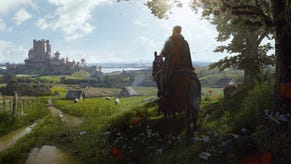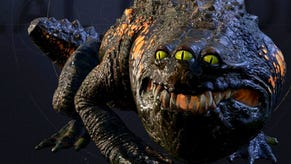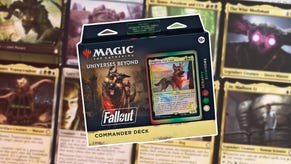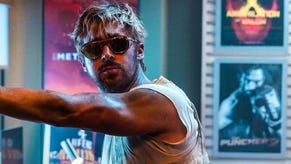2013 in Review: The Year We All Became Pokemon Masters
It may not seem like it, but Pokemon X and Y marks a turning point for the series.
This article first appeared on USgamer, a partner publication of VG247. Some content, such as this article, has been migrated to VG247 for posterity after USgamer's closure - but it has not been edited or further vetted by the VG247 team.
??It was just about four years ago that I sat down for an episode of Active Time Babble and attempted to explain the ins and outs of Competitive Pokemon -- the crazy strategy, the hidden stats... everything. At the time, I felt like I was blowing the lid off some crazy hidden subculture. After all, the term Competitive Pokemon itself seems almost oxymoronic. Who on earth gets competitive about Pokemon, of all things?
But unbeknownst to me, the wheels were turning over at Game Freak and The Pokemon Company. To them, Competitive Pokemon was the new frontier of the series, and now we can see the culmination of their efforts in Pokemon X and Y -- arguably the first generation to be primarily geared toward competitive play. All the sudden, Competitive Pokemon no longer feels like a joke; at this point, it's practically the game's raison d'etre.
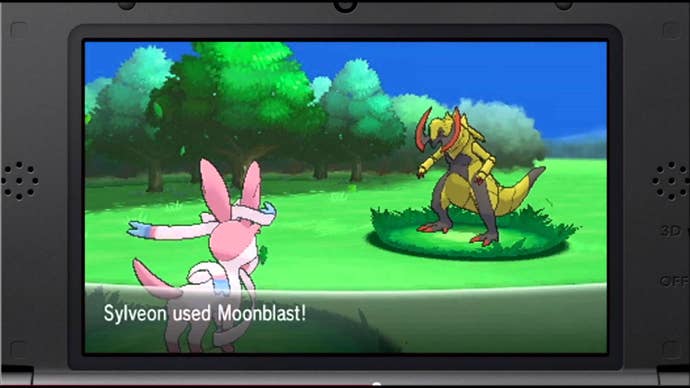
It's a shift that has been in the works for a while now, starting in earnest around the release of Pokemon Heart Gold and Soul Silver in 2009, but it still feels like a moment of validation for the competitive community. For years, playing competitively felt weirdly illicit, like hacking the game. EV Training was the Pokemon equivalent to Wavedashing in Super Smash Bros. -- a mechanic co-opted by the community for a purpose other than what it was designed for. Even now, Game Freak doesn't like terms like "effort values," preferring the more euphemistic potential.
The shift to a more competitive mindset for the series began in 2009, with the launch of the Pokemon World Video Games Championships . After various false starts and one-off events, The Pokemon Company finally hit paydirt with the Pokemon World Video Game Championship in 2009 -- right about the time that I was trying to educate my colleagues on the crazy world of Competitive Pokemon. Since then, the tournament has steadily grown, gaining acceptance with competitive communities around the world, and turning Pokemon into something approaching a genuine eSport. It may seem relatively minor when compared to the likes of League of Legends and Street Fighter, paying out a mere $3500 scholarship award, but trust me when I say that this event matters a lot to Game Freak and The Pokemon Company. A lot.?
With the rise of the VGCs, Game Freak has done its best to codify and streamline some of the community's accepted training techniques. In Pokemon Heart Gold/Soul Silver, for instance, it became possible to fix a base stat when breeding a monster by attaching an item like the Power Anklet. In last year's Pokemon Black 2/White 2, the Join Avenue made it relatively easy to level up and train your monsters... provided you were willing to spend a lot of time farming money. It was still incredibly time consuming, but it was a step in the right direction.?

For its part, Pokemon X/Y represents the next step in transforming competitive battling from a niche proposition to one of Pokemon's main activities. There will always be people who eschew battling for collecting and sharing; but with horde battles and various breeding mechanics making training easier than ever, even casual players are getting sucked in. From barely recognizable jargon, terms like effort values have become a part of the game's mainstream lexicon.
Game Freak has also used this opportunity to rebalance the monsters a bit and rein in some of the power creep from the past two generations. Many of the new Pokemon are weaker than the ones that came before, reversing the trend of stat inflation that had become apparent in Pokemon Black/White. But that doesn't mean that all of the newcomers are useless; far from it. It just represents a shift from raw power to something a little more subtle. Talonflame, for instance, may not seem all that strong, but its Gale Wings ability means that it will always attack first when using flying moves, making it extremely difficult to deal with.?
They've also retooled older monsters like Mawile -- the tiny monster with the misfortune of having a set of jaws straight out of the Little Shop of Horrors growing out of the back of its head. Once a bit of filler from Pokemon Ruby and Sapphire, Mawile has grown in popularity thanks to its new Fairy typing and Mega Evolution, which bestows upon it a new form and much better stats. But like its newer conterparts, it's not a traditional sweeper; that is, it doesn't bulk up and crush teams with sheer speed and power. Instead, it knocks out foes before they can even act with a powerful Sucker Punch, or absorbs blows with its massive bulk and hits back even harder with Rough Play.?
Mawile is emblematic of a more nuanced approach to balancing on Game Freak's part. Rather than simply buff or debuff a monster's stats, they are giving individual monsters the tools they need to succeed in their particular niche. It's a similar approach to the one that Capcom is taking with Ultra Street Fighter IV, in which various moves are being tweaked to better meet the needs of each fighter's individual style.?

For Game Freak, this approach is not without its drawbacks. Pokemon X/Y has face even heavily criticism than usual from some quarters for being too similar to previous generations, despite the new graphics engine and online updates. As with Street Fighter, it's not always easy to perceive balance changes with the untrained eye, which can make real upgrades seem insignificant. And the perception that Pokemon X/Y is more of the same is exacerbated by the fact that it focuses so heavily on older monsters like Charizard and Mawile.?
Nevertheless, Pokemon X/Y represents something of a turning point for a series that has long been more social than competitive. It's the clearest indication yet that Game Freak intends to make the needs of the competitive community a priority going forward -- an idea that would have seemed insane just a few years ago. From now on, EV training (sorry, "training a Pokemon to its full potential") will be as much a part of the Pokemon experience as trading and collecting.?
In a way, it's a little bittersweet to see Pokemon in the same category as Street Fighter and StarCraft -- hardcore competitive games fully supported by their respective developers. For the better part of a decade, competitive battling felt like my little secret. Now, that secret is definitely out. For better or worse, 2013 is the year we all became Pokemon Masters.


